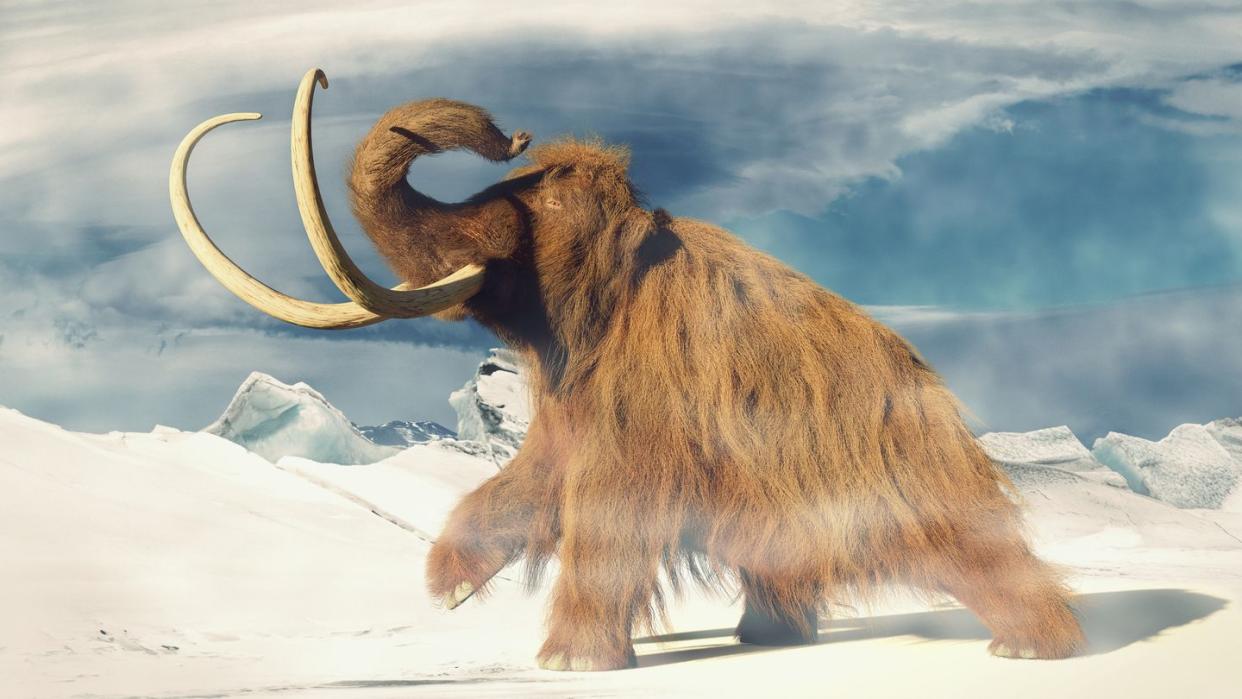A Piece of Evidence May Explain Why the Woolly Mammoth Disappeared So Suddenly

"Hearst Magazines and Yahoo may earn commission or revenue on some items through these links."
The search for exploding comet residue strong enough to have wiped out the woolly mammoth has dipped deep below the Earth’s surface.
Scientists believe they can find a meteor blast in Earth’s history strong enough to change the climate and, as a result, the animals that lived on Earth.
Evidence may exist for a comet shockwave hitting Earth after the last ice age.
We don’t have the woolly mammoth with us any longer, but we aren’t sure exactly why. Christopher Moore, an archaeologist at the University of South Carolina, blames a massive meteor—even if he doesn’t have a crater to prove it.
However, Moore and and his team believe that we may not need a crater to prove the extremely controversial Younger Dryas impact hypothesis—the idea that roughly 12,800 years ago, the climate took a sudden shift in the northern hemisphere that helped wipe out the woolly mammoth. Instead, they’ve been thinking something else will fit the bill: a meteor shockwave.
In a new study published in the journal Airbursts and Cratering Impacts, the team presents evidence that he believes points to a major meteor exploding near Earth—possibly not actually striking Earth physically—that would have caused the kind of rapid climate change throughout the northern hemisphere that would lead to a complete shift in our world.
“They explode in the air before they hit the ground,” Moore said about comets in a news release, “but if they’re low enough, the shockwave and heat can hit the ground and melt sediment, produce microspherules, and shock the quartz. We’re being hit by these things more than most people think.”
Evidence from Greenland’s ice cores show elevated levels of combustion aerosols, which indicate that a large, prehistoric fire raged at the proposed beginning of the climate event. Add in high levels of platinum found from Syria to South Carolina—rare in Earth’s soil, but incredibly common in comets—and the location of both magnetic balls of iron known as microspherules and shock-fractured quartz that melted into silica in different areas, and the researchers believe that a convincing picture is beginning to take shape.
With no crater providing modern-day physical evidence, the team has relied on Earth’s chemical makeup. They sifted through multiple dig sites, from a shallow wetland on the U.S. Department of Energy’s Savannah River nuclear site to a location in the Chesapeake Bay in Maryland, and a spot 25 miles inland from Atlantic City in Newtonville, New Jersey. These wildly diverse locations all had something in common: the evidence of platinum, microspherules iron balls, and quartz at depths showing they would have been exposed in the Younger Dryas period.
The researchers believes it all adds up to a comet—or, at least, the remains of one—hitting Earth. And this wouldn’t have been a small impact. The evidence collected, the team argues, points to minerals dusting sites across the globe, a fire starting in Greenland, and enough mayhem to launch a dramatic climate event.
“I suspect that it played a big role in leading to the extinction of the megafauna,” Moore said in a news release. “It’s like putting 75 elephants on a quarter. It’s a tremendous amount of pressure that creates what we’re seeing.”
What really has pushed Moore’s theory forward is the discovery of the shock-fractured quartz at all three sites, the first time they’ve been located at the Younger Dryas depth in so many locations. He claims that the distribution of the quartz over such a large region—each having undergone the same change—would have required some sort of significant impact.
This all remains theoretical, of course, especially with no crater to show for it. While the Younger Dryas impact hypothesis remains popular in the media as an explanation for certain ancient events, it is not the scientific consensus, and many experts reject the theory entirely.
But Moore and his team remain convinced, writing in the study that “the collective evidence” meets the criteria of an event powerful enough to have set off a chain reaction of global change—one that included the ultimate demise of the woolly mammoth. Only time, and a lot more evidence, will tell if they’re right.
You Might Also Like

